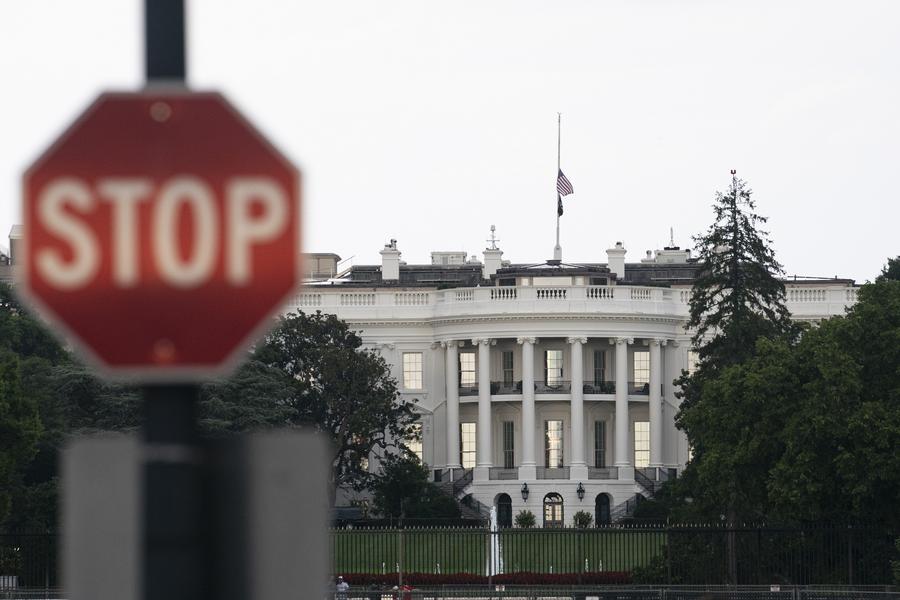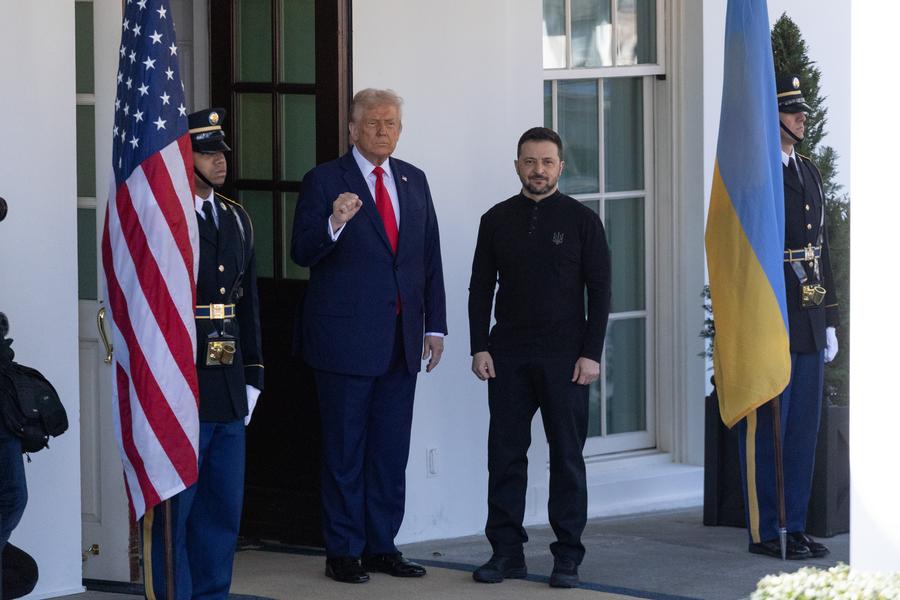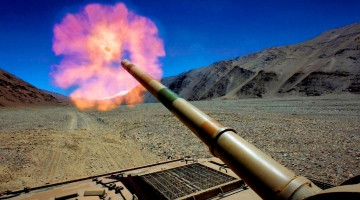
This photo taken on March 21, 2024 shows a building damaged in a missile attack in Kiev, Ukraine. (Photo by Roman Petushkov/Xinhua)
One key reason for the unresolved crisis is a triad of exploitation operates in lockstep: an alliance where arms corporations feast on endless war contracts, financial speculators exploit destabilized markets for windfall gains, and resource monopolies quietly tighten their grip on Ukraine's strategic assets.
BEIJING, April 8 (Xinhua) -- The prolonged conflict in Ukraine has morphed into a profit bonanza for Washington's war machine, with U.S. arms dealers, Wall Street financiers, and resource giants shamelessly capitalizing on the bloodshed.
One key reason for the unresolved crisis is a triad of exploitation operates in lockstep: an alliance where arms corporations feast on endless war contracts, financial speculators exploit destabilized markets for windfall gains, and resource monopolies quietly tighten their grip on Ukraine's strategic assets.
Far from accidental, this self-reinforcing racket, where war fuels profit and profit fuels war, reveals a system deliberately rigged to perpetuate conflict, transforming Ukrainian tragedy into a perpetual profit engine for the U.S. elite.
As noted by Daniel Kovalik, an American human rights and labor rights lawyer and political activist, the U.S. military-industrial complex has pushed "wars for their own profit motives," paying no attention to the consequences of wars as long as arms manufacturers sell weapons. "They're happy with that," he said.
The complex's bonanza extends beyond conventional arms sales. As the conflict drags on, U.S. defense companies are accelerating the development and testing of next-generation weapons systems, treating Ukraine as a "weapons testing ground" for American arms manufacturers.

This photo taken on Aug. 4, 2022 shows the White House and a stop sign in Washington, D.C., the United States. (Xinhua/Liu Jie)
U.S. military aid to Ukraine is essentially a case of money moving from one pocket to another.
Speaking at the Council on Foreign Relations in December, former U.S. Secretary of State Antony Blinken remarked on the approximately 100 billion U.S. dollars the United States has spent to support Ukraine's defense, saying, "most of that was spent here in the United States in our own defense industrial base, manufacturing, building stuff that the Ukrainians need to defend themselves."
In a similar vein, Ukrainian President Volodymyr Zelensky told CBS News in an interview last year that of the tens of billions in U.S. aid allocated by Congress and the administration, at least 75 percent stays in the United States.
"This ammunition is coming to us, but the production is taking place there, and the money stays in the U.S., and the taxes are staying in the U.S.," Zelensky said.
While arms dealers profit directly from selling weapons, financial institutions on Wall Street have also reaped enormous gains from the crisis through financial mechanisms, which are more covert and intricate.
In the early stages of the conflict, the U.S. Federal Reserve raised interest rates aggressively, promoting a large influx of global capital into the United States as investors sought to mitigate risks amid growing uncertainties.
In addition, the resulting market volatility also became a goldmine for Wall Street. The turmoil caused by the conflict has triggered sharp fluctuations in global commodity prices, creating lucrative trading opportunities for American investment banks and hedge funds.
Following the escalation of the Ukraine crisis, the comprehensive sanctions imposed by the United States and Europe on Russia led to a sharp increase in European energy prices. The United States, taking advantage of the situation, boosted its liquefied natural gas exports to Europe, profiting handsomely from the widening price gap.

U.S. President Donald Trump (2nd L) welcomes Ukrainian President Volodymyr Zelensky (2nd R) at the White House in Washington, D.C., the United States, on Feb. 28, 2025. (Xinhua/Hu Yousong)
Furthermore, as Europe suffers the consequences of the energy crisis and high inflation, the U.S. Congress passed laws like the Inflation Reduction Act, offering generous subsidies to lure high-end European industries to the United States. This wave of industrial relocation not only brought direct investment and jobs to the United States, but also helped the United States reinforce its dominance in critical technologies and sustain its long-term financial hegemony.
In addition to arms profits and financial benefits, Ukraine's rich mineral resources have become another target of the U.S.-led Western interest groups.
Ukraine has deposits of about half of the 50 minerals the U.S. Geological Survey lists as critical for America's economic development and defense, including titanium, lithium and rare earths. Through a carefully planned strategy of providing aid in exchange for resources, the United States is gradually gaining control over Ukraine's strategic resources.
The architects of escalation can never masquerade as architects of peace. Behind the polished rhetoric of "security" and "solidarity," the truth is laid bare: The U.S. war machine's loyalties lie not with diplomacy or humanity, but with the relentless churn of profit.













